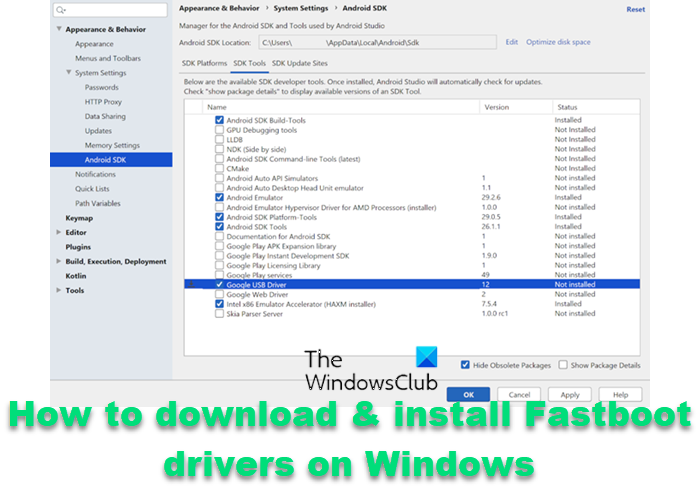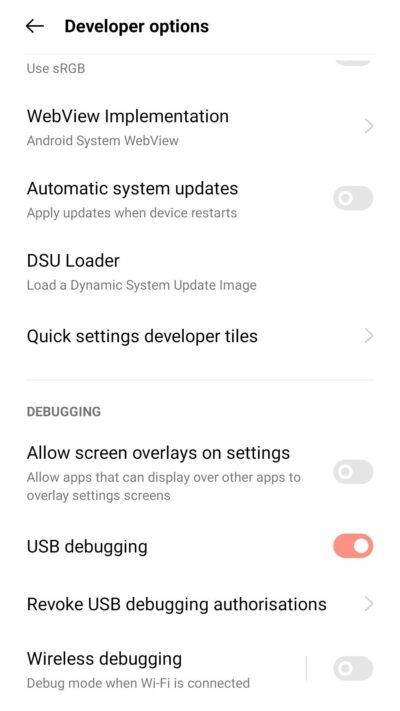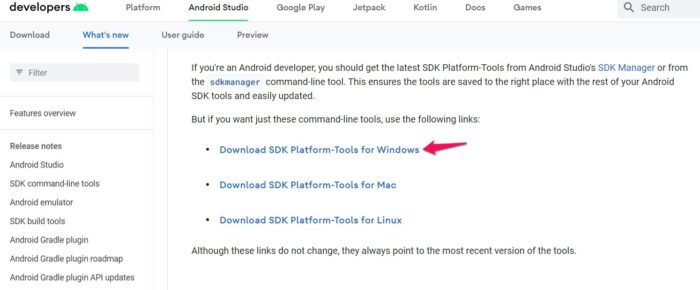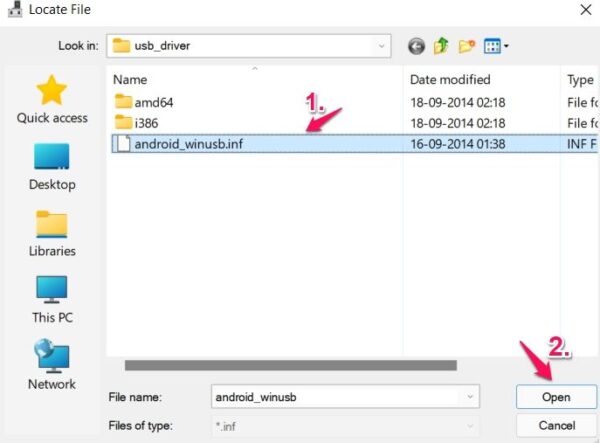This guide covers step-by-step instructions to download & install Fastboot drivers on Windows 11. A device bootloader is among the most essential tool, especially if you are more into Android customization. From changing the interface to usability and functionality, you can tweak anything by accessing your device bootloader. But in order to use the bootloader, it’s essential for you to have all the vital drivers installed on your computer. If Windows doesn’t feature the vital drivers, it will fail to identify the connected Fastboot device. To summarise, your Windows needs to have the Fastboot drivers in order to execute Fastboot Commands. So, let’s check out how you can download and install Fastboot drivers on your Windows 11 or Windows 10 PC.

What is ADB?
ADB stands for Android Debug Bridge, and as it is pretty clear by the name itself, it acts as a bridge between your Android smartphone and Windows PC. After connecting your Android smartphone with the PC, you can easily tweak the smartphone system applications and functionality. You can use the feature to install custom OTA and manually install or uninstall files on the connected smartphone. Along with all these, you can also use this feature to boot the device in custom recovery or boot to Fastboot.
To use all these features successfully, you need to do a couple of things on your smartphone and Windows PC. On the smartphone, you will have to enable the USB debugging feature. Whereas, on your Windows PC, you will have to download and install the Android SDK Platform-Tools.
What is Fastboot?
The Fastboot binary is among those things of the Android ecosystem, which can be complex for users whose sole purpose of using a smartphone is to make calls and messages. It is a protocol that is used for sending commands to your Android phone over USB. But if you are more into exploring the environment, you must have a piece of prior knowledge about Fastboot and ADB. In Fastboot, your device won’t be booted in a default Android interface. Instead, you will find a dedicated Fastboot menu that makes sure that, unlike ADB, you don’t have to go through enabling the USB debugging feature on your Android smartphone. You can use the Fastboot commands to unlock the bootloader of the Android smartphone that you are using.
Along with all these, you can also use Fastboot commands to flash different kinds of ZIP and IMGs files on your Android smartphone. But similar to ADB, your PC must feature essential Fastboot drivers in order to recognize the smartphone in Fastboot mode. You will have to download the Android SDK platform-tools to solve the problem. After that, you will also have to download and install the required drivers.
How to download & install Fastboot drivers on Windows 11?
For your convenience, we have divided this guide into three sections. First, we will talk about enabling the USB debugging feature on your Android smartphone. Second, we will see how you can download and install Android SDK platform tools. And in last, we’ll see how to download and install the Google USB Driver. So, let’s begin.
Enable USB debugging on Android

To enable USB debugging on Android smartphones, follow the below steps.
- Open the Settings menu on your Android smartphone, and open the About Phone option.
- In the following window, tap on the Build number option seven times.
- Now, come back to the settings homepage.
- Navigate to Additional Settings > Developer options.
- Toggle on the USB debugging option.
Read: How to install Windows from Android phone using DriveDroid?
Download SDK Platform-Tool for Windows

Once you have enabled the USB debugging option on your Android smartphone, it’s time to download the latest SDK Platform-Tool from Android studio. To do so, follow the below steps.
- Open Google Chrome, navigate to the Android Studio website and download SDK Platform-Tool for Windows.
- Extract the downloaded file to a remote place on your PC.
- Open the extracted folder and click on the address bar.
- Type CMD in the address bar and press the enter key.
- In the command prompt window that pops up, type the below-mentioned command to boot the device in the Fastboot mode.
adb reboot bootloader
Read: Fastboot not working or detecting device on Windows 11/10
Download, and Install Google USB Driver

Now that you have the Android SDK platform installed on your system, it’s time to get your hands on the Google USB driver. Here’s how it’s done.
- Open Google Chrome, navigate the Android studio platform, and download the Google USB Driver zip file.
- Extract the downloaded file.
- Now, press the Windows + X key simultaneously, and from the context menu, choose Device Manager.
- Expand the portable devices option.
- Right-click on the smartphone name you have connected with the computer using a USB cable, and choose the Update driver option.
- In the following window, choose the Browse my computer for drivers option.
- Click on Let me pick from a list of available drivers on my computer.
- Click on Have Disk option.
- In the prompt that pops up, choose the Browse option.
- Select, and open the android_winusb.inf file available in the Google USB folder.
- Now, click on OK.
- Select the Android bootloader interface from the following window and click on the next option.
- Choose the Install option from the prompt that pops up.
- That’s it. You have finally installed Android bootloader interface drivers on your system.
- Now you can see the Android Bootloader Interface option under the Android Device option.
So, that was all about how you can install Fastboot drivers on your Windows 11 PC. Hope this guide was helpful.
See: How to transfer files between Android and Windows using ES File Explorer
Can we run APK on Windows 11?
Yes, you can run the APK on Windows 11; in fact, it is one of the significant updates in the latest Windows OS. You can install the APK apps; you need to use Windows Subsystem for Android. To be very precise, you download and install Android apps on Windows 11 officially using Amazon App Store. You can even sideload Android apps on your Windows PC using the ADB tools.
What is WSA in Windows 11?
WSA stands for Windows Subsystem for Android. It is a newly introduced feature in Windows 11, and you can use it to run Android applications that are available on the Amazon App Store.
Leave a Reply